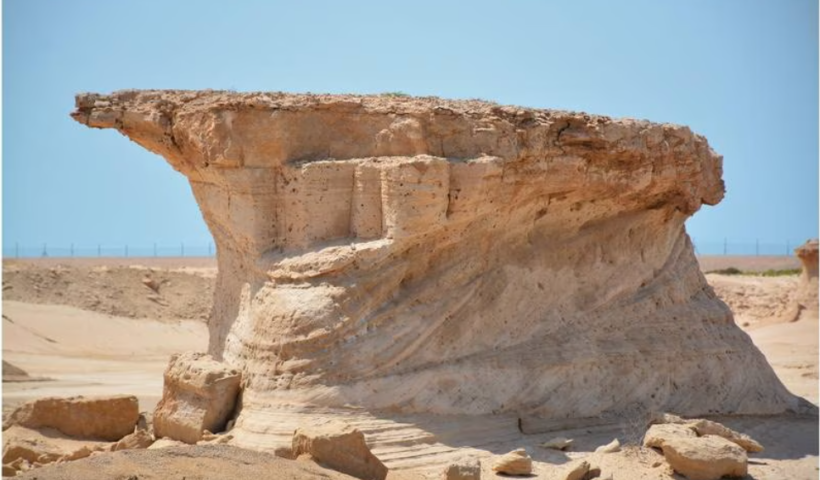It took almost ten years to complete and is significant since it is the first Arabic-language resource on the nation’s geology.
A book that has been translated into Arabic for the first time provides insight into the UAE’s more than 600 million-year geological history.
The nation’s geological structure, notable events and eras, as well as its mineral riches, are all covered in the book, which took more than ten years to write.
The Ministry of Energy and Infrastructure published The Geological Evolution in the UAE during over 600 million years of Earth history.
As the first reference on the nation’s geology to be published in Arabic, Khalid Al Hosani, director of the geologist and natural resources department in the Ministry, told The National that it represents an important milestone.
The detailed text, according to him, “depicts the nation’s geological development over a period of over 600 million years.
It compiles findings from numerous geological and geophysical investigations and surveys that the ministry carried out in collaboration with a number of specialized international knowledge institutions.
The book gives a thorough picture of the dynamic geological development of the UAE.
For geologists, researchers, and scientists in academia, government agencies, and the mining industry sector, it provides a trustworthy scientific resource with hundreds of geological maps and rich color drawings.
According to Mr. Al Hosani, the ministry and the British geological department are also collaborating on a study initiative.
The British geological survey is an agency of the government that uses organized surveying and research to increase geoscientific understanding of the UK’s land mass and continental shelf.
Mr. Al Hosani, the government and the organization inked a contract to work together on information sharing and research projects.
Studying the nation’s tectonic movements over many geological eras and its geological development is the main goal.
The author said, “This significant study effort needed extensive aerial surveys covering over 80,000 square kilometers.”
Additionally, it included deep seismic, radiological, gravity, geomagnetic, and surveys that provided crucial information regarding the deep structures of the Earth’s crust.
According to Mr. Al Hosani, the UAE’s mountain paths are another area of geological interest. He continued, “These surveys may present novel approaches for locating fresh oil and gas resources.”
These paths act as a national geological museum and are home to numerous rocks and unusual geological features.
They are a popular geotourist site and provide a unique perspective on the country’s geological and ecological alterations over time.
The 96-million-year-old “ophiolite” rocks, which are actually chunks of solid sea floor that have been driven upward and onto land, are among the things Mr. Al Hosani claimed to have discovered in these paths.
“These rocks contain potential treasures hidden from view and provide distinctive perspectives into the geological forces sculpting the earth.”
He claimed that because they provide a perspective of the shift from the edge of the continent to the deep ocean, they are also a popular location for geologists and researchers worldwide.
The Al Wathba Dunes Fossil Reserve and the Geopark in Sharjah will both be put out by the government for consideration by Unesco as World Heritage sites and Geoparks, respectively.
According to Mr. Al Hosani, “this is a part of the nation’s commitment to conserving natural areas and promoting geoscientific tourism.”
The Sharjah Environment and Protected Areas Authority has collaborated on the designation of the Sharjah Geopark.
He claimed that the national program for safeguarding of geological heritage and eco-tourism, run by the ministry, strives to maintain the country’s essential geological and cultural variety.
“The program is designed to promote ethical travel, raise environmental awareness, and create national and international alliances to protect geological heritage.”



